“Reconstruction Action 100⁺(Plus)” is the generic name of more than 100 various voluntary projects by Tohoku University’s faculty members to support the restoration and revitalization process since the Great East Japan Earthquake. While taking advantage of our own knowledge and specialty, we are promoting those activities based on six categories as follows.
![]() Support activities for affected people
Support activities for affected people
- Support for disaster‐affected children
- Mental care for disaster‐affected people
- Center for Community Health
- Development of the training program for the religious professionals
![]() Survey and understanding extent of damage
Survey and understanding extent of damage
- Grass‐roots radiation monitor in Fukushima
- Assessment of the biological environment impacts of the tsunami and radiation leakage
![]() Recovery and reconstruction activities
Recovery and reconstruction activities
- Rescue activities for disaster‐affected museums
- Agricultural Reconstruction Project
- Archaeological survey using Ground‐Penetrating Radar for the resettlement of the tsunami victims
- International planning studio for the reconstruction
- Technological support in relation to the Fukushima Nuclear Power Plant
![]() Disaster prevention and mitigation measures
Disaster prevention and mitigation measures
- Study on the mechanism of the Great East Japan Earthquake and application of study results in practical settings
- Development of disaster prevention technology
![]() Improvement of information and social infrastructures
Improvement of information and social infrastructures
- Survey of the needs for oral care in disaster‐affected residents and establishment of a system to provideoral care services
- Establishment of the digital archive of disaster remains
![]() Industrial reconstruction and research and development
Industrial reconstruction and research and development
- Development of alternative energy sources
- Development and deployment of disaster‐resistant medical instruments
- Development of rescue robot technology
 Center for Community Health
Center for Community Health

Public health systems in many affected areas were also severely damaged and are not fully functioning yet. It is critical to recovery the local public health systems for protecting lives and health of survivors and also for recovery of the communities as whole.
Tohoku University Graduate School of Medicine has established the Center for Community Health with an aim to provide technical support toward recovery of public health systems in affected areas.
 Development of the training program for the religious professionals
Development of the training program for the religious professionals
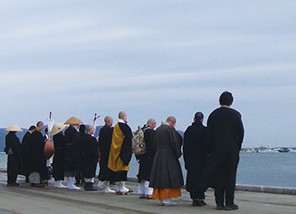
The 3.11 tsunami cost many lives. Since the disaster, a volunteer group consisting of religious professionals like Buddhist monks, Christian ministers, medical professionals, and religion scholars have visited the affected areas to support the affected people. They soon realized that psycho-spiritual relief work can offer comfort, soothe psychological pains and can help to get through the loss of loved ones.
Tohoku University launched a new counseling skills training program Practical Religious Studies for religious professionals who offer practical spiritual care based on a variety of religions and denominations.
 Grass-roots radiation monitor in Fukushima
Grass-roots radiation monitor in Fukushima
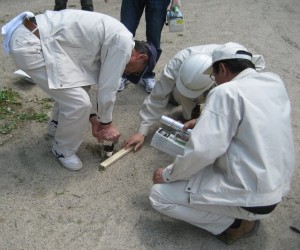
This project was launched by Miharu Town Hall in Fukushima Prefecture and volunteers of Tohoku University, with the aim to watch the growth of Miharu’s children. People in the town have been deeply concerned about radioactive contamination and rumors since the nuclear power plant accident.
The project members regularly do radiation monitoring at the playgrounds of all schools in the town. Also, they distribute personal dosimeters to about 1,400 children in the town and check its radiation dose.
 Rescue activities for disaster-affected museums
Rescue activities for disaster-affected museums

Cultural heritages such as precious specimens and archaeological documents had been damaged by the Great East Japan Earthquake. The members of Tohoku University Museum have engaged in the project by the Agency for Cultural Affairs to rescue collections from disaster-affected museums and repair them. The group contributes the preservation of cultural heritages.
 Agricultural Reconstruction Project
Agricultural Reconstruction Project
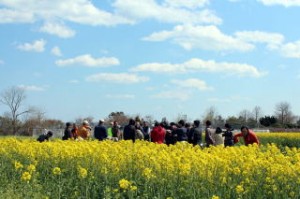
The earthquake and tsunami occurred in March, 2011 caused a lot of damage in the rich farmlands and fishing grounds in the Tohoku region. For the disaster recovery of the region, the restoration of those industries carries great weight.
Agricultural Reconstruction Project consisting of a total of 36 activities assists in restoration of the agriculture, forestry and fisheries industry, such as planting salt-tolerant rape blossoms in farmlands damaged by seawater, supporting rehabilitation of oyster farms, and taking care of the farm animals in the evacuation zone surrounding the Fukushima Daiichi nuclear power plant.
 Study on the mechanism of the Great East Japan Earthquake and application of study results in practical settings
Study on the mechanism of the Great East Japan Earthquake and application of study results in practical settings
Research Center for Prediction of Earthquakes and Volcanic Eruptions has been promoting the fundamental research in prediction of earthquakes and volcanic eruptions, focusing particularly on Northeastern Japan.
The earthquake happened on March, 11, 2011 caused the greatest damage never before experienced by us. The center has been promoting studies on the mechanism of this earthquake for future disaster mitigation measures. The center also regularly holds public lectures to introduce their study results.
 Establishment of the digital archive of disaster remains
Establishment of the digital archive of disaster remains
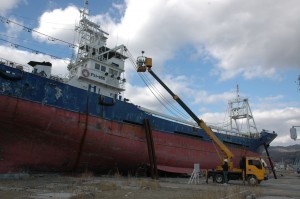
A building pushed over sideways, a large vessel remaining stranded ashore, and … Such “disaster remains” still reminds us of the violence of the tsunami and the devastating damage. Opinions have been divided over whether those remains should be preserved or removed.
As time passed, these disaster remains have been demolished one after another. The Tohoku University Museum has taken pictures of the remains by laser scanner and created 3D computer-generated images before the remains are dismantled. With the aim to pass the lessons from the disaster to future generations, we will establish the digital archive of disaster remains.
 Development of rescue robot technology
Development of rescue robot technology
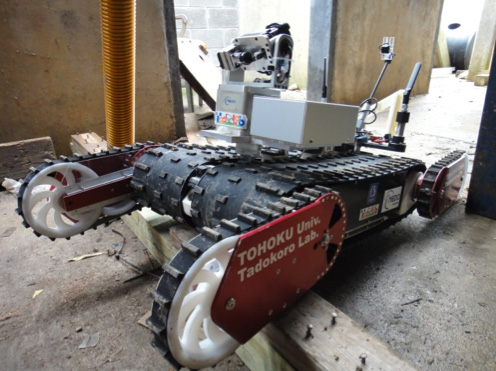
Rescue robots and related technologies for victim search and information gathering in piles of rubble have been developed. A rescue robot named “Quince” that Tohoku University co-developed with Chiba Institute of Technology was used for the investigation in the heavily damaged buildings of Fukushima Daiichi Nuclear Power Plant in June 2011.
※The activities listed above are a part of “ Reconstruction Action 100⁺”.


